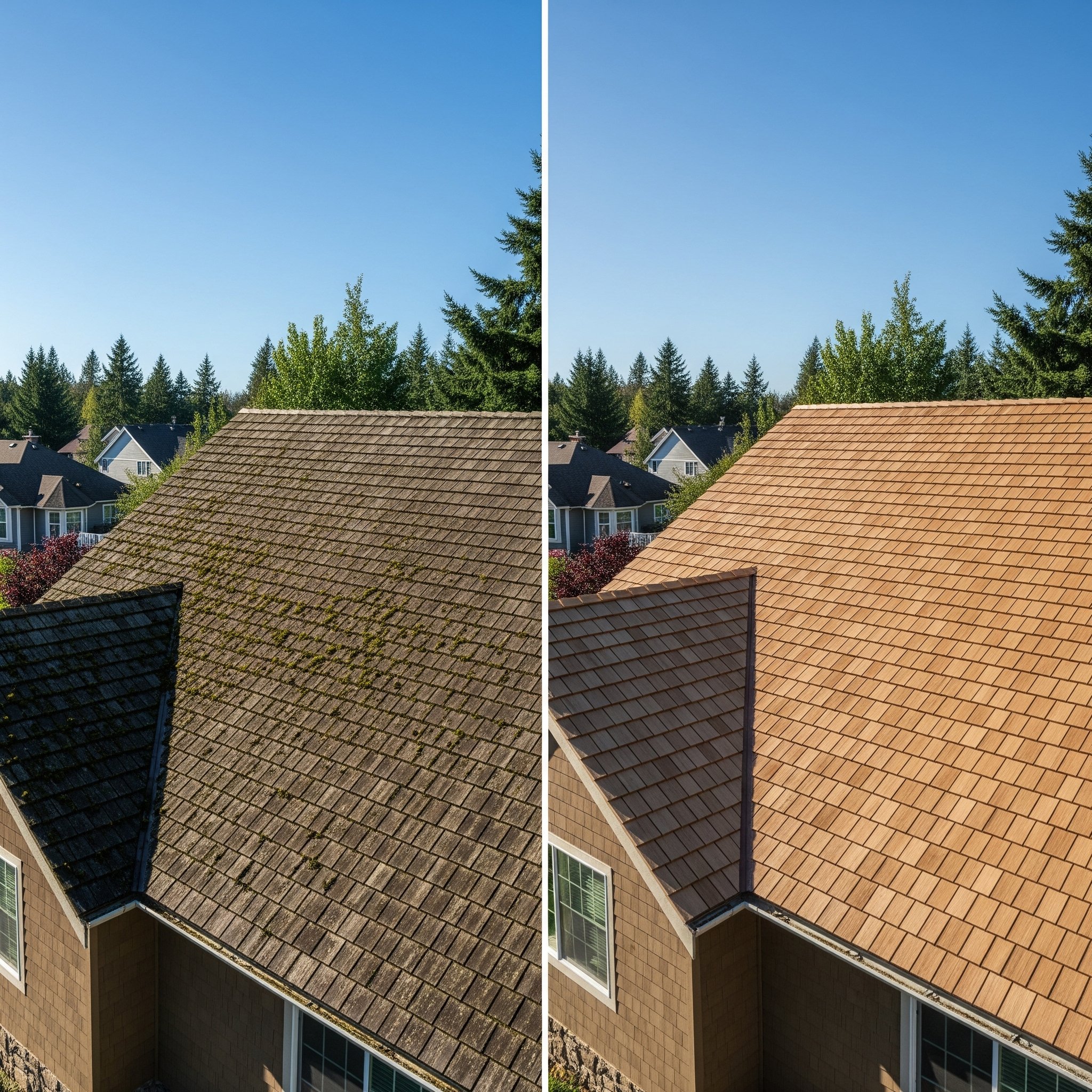
Your Roof is in good hands
With Vancouvers #1 Rated Roof cleaner
- IT ONLY TAKES 15 SECONDS

This Method is the Safest and Most Effective
✔ Spray It On. Walk Away. Let Nature Do the Rest.
Our leave-on treatment works over time, safely decomposing moss, algae, lichen, and other organics without harsh pressure.
✔ The Most Effective Roof Cleaning Method
We follow manufacturer-approved guidelines to gently sanitize your roof without damaging the shingles, tiles, or shakes. It kills organics at the root—no rinsing required.
✔ Gentle Prep, Powerful Results
We lightly brush off the heavy moss, then spray a leave-on treatment that does the rest — safely and effectively.
All methods approved by
Check out the results for youself
Proof is in the pictures — we don’t clean, we transform.”












